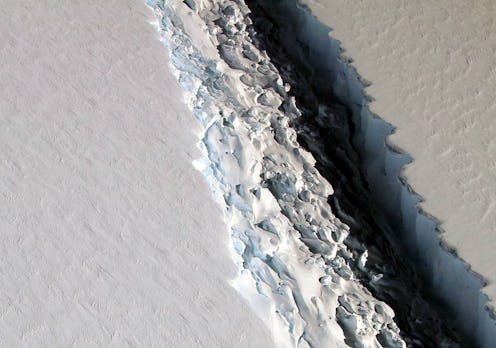News
A Huge Iceberg Breaks Away From Antartica

According to British scientists, a massive iceberg has broken off of Antarctica. The iceberg, which is a trillion tons and 5,800 square kilometers, may make it hard for ships to navigate the waters around Antarctica.
"The iceberg is one of the largest recorded and its future progress is difficult to predict," Adrian Luckman, a geography professor at Swansea University, told Reuters. Luckman heads Project MIDAS, the group that has been monitoring the ice shelf that broke off.
It is not unusual for icebergs to break off from Antarctica, but what is unusual is the size of this particular iceberg, which broke off from the Larsen C ice shelf, Luckman noted.
It may remain in one piece but is more likely to break into fragments. Some of the ice may remain in the area for decades, while parts of the iceberg may drift north into warmer waters.
It remains unclear, however, what caused the iceberg to break off from the frozen continent. "At this point it would be premature to say that this was caused by global warming," Anna Hogg, a scientist at the Centre for Polar Observation and Modelling at the University of Leeds, told CBS News.
Though the cause of the iceberg breaking off was in his mind likely not due to climate change, Martin O'Leary, a glaciologist with MIDAS, said that this event makes the ice shelf more fragile.
Although this is a natural event, and we're not aware of any link to human-induced climate change, this puts the ice shelf in a very vulnerable position. This is the furthest back that the ice front has been in recorded history. We're going to be watching very carefully for signs that the rest of the shelf is becoming unstable.
The portion of ice shelf that broke off — according to Vox, it's about the size of Delaware — has been tearing away from the icy continent since at least 2010. In the past few years, the pace of breaking accelerated considerably to 33 feet per day. The European Space Agency, which confirmed that the iceberg had broken off on Wednesday, said late last week that there was just 3 miles left before the final breakage.
"We have been anticipating this event for months, and have been surprised how long it took for the rift to break through the final few kilometers of ice," said Luckman. "We will continue to monitor both the impact of this calving event on the Larsen C Ice Shelf, and the fate of this huge iceberg."